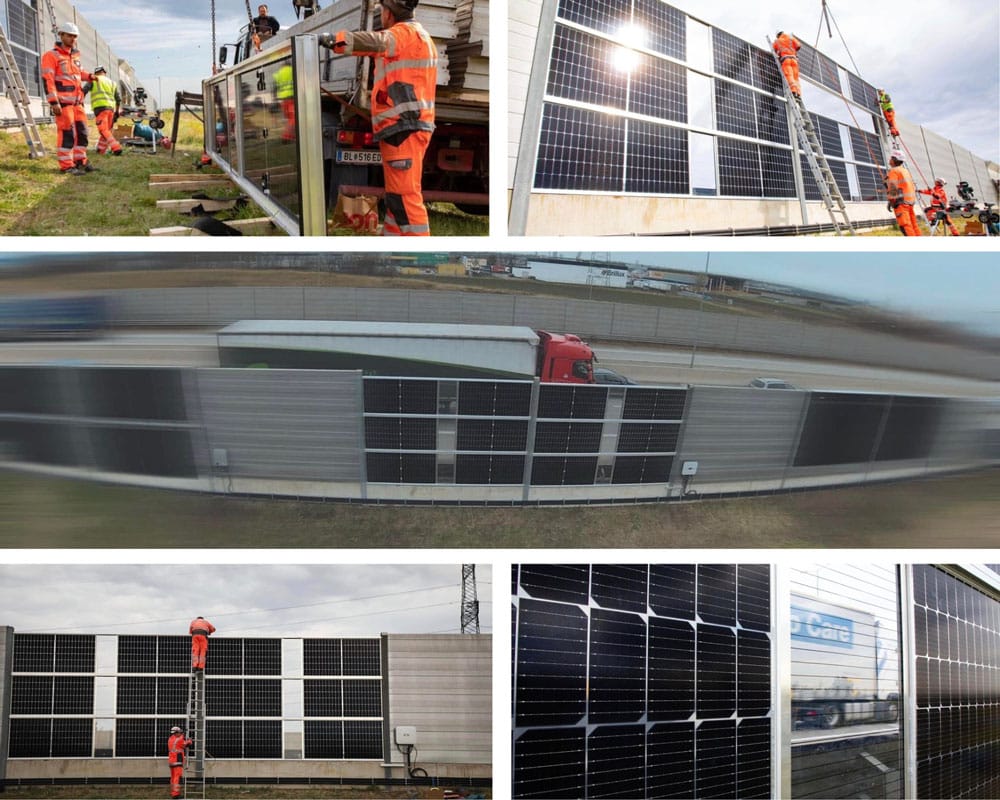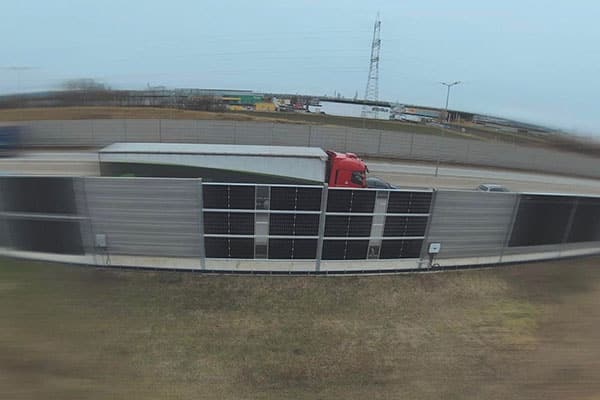In a bid to combat environmental pollution and contribute to renewable energy, Austria is introducing a revolutionary concept – transforming conventional highway noise barriers into solar power plants. This innovative project is unfolding on the S1 autobahn on the southern outskirts of Vienna, marking a significant shift from the ubiquitous gray walls that have historically lined the country’s highways.
The plan, as explained by Derian Agov on a LinkedIn post, is to replace the monotonous and functionally limited noise protection walls with photovoltaic (PV) modules, creating a powerful blend of noise reduction and renewable energy production.
This transformation is scheduled to occur over a total length of 70 kilometers in the first stage of expansion, promising a new outlook for the renewable energy landscape in Austria.
The initial rollout will comprise six pilot projects, each focused on testing various combinations of PV modules, mounting systems, and inverters. These experimental stages are critical in identifying the most efficient variant, laying the groundwork for a large-scale implementation that seamlessly blends noise reduction with energy production.

Noise protection walls are replaced by photovoltaic modules on the S1 on the southern outskirts of Vienna. (Derian Agov, CEO of Deriva Solar Systems via LinkedIn)
The proposed photovoltaic modules are expected to provide an output of around 42 MW in the first expansion stage. This remarkable capacity showcases the potential of solar energy in transforming conventional infrastructure into effective sources of renewable energy.
The end goal is to foster an environment-friendly and sustainable highway system that not only reduces noise pollution but also contributes significantly to the country’s energy grid.
This pioneering project is a testament to Austria’s commitment to environmental sustainability and innovative thinking.
It reflects a clear understanding of the need to maximize the use of available resources, in this case, the surface area of noise barriers. With this initiative, Austria is set to re-define the purpose of highway noise barriers, offering an innovative solution that addresses two critical issues – noise pollution and renewable energy production.
While the implementation of these solar noise barriers is currently in its infancy, the implications for renewable energy and noise reduction are profound.
If successful, the project has the potential to revolutionize how we perceive and utilize highway infrastructure. Instead of seeing these structures as purely functional, they can now be viewed as potential energy sources, powering our homes, businesses, and perhaps even the electric vehicles that pass by them.
The implications extend beyond Austria’s borders.
If these solar noise barriers prove successful, they could inspire similar projects globally, ushering in a new era of renewable energy utilization and noise pollution reduction. This could lead to the proliferation of solar-powered noise barriers in highways worldwide, contributing to the global effort to reduce carbon emissions and fight climate change.
As the world seeks to transition from fossil fuels to renewable energy, projects such as Austria’s solar noise barriers showcase the possibilities that lie ahead. By integrating solar panels into the infrastructure, we can harness the sun’s energy more efficiently and transform the way we think about renewable energy.
This project is a significant step towards a sustainable future. It is an example of how innovation and environmental consciousness can turn a simple, functional structure into a powerful tool for change. While the road ahead may be long and challenging, initiatives like these pave the way for a more sustainable and environmentally friendly future.
Austria’s efforts to transform highway noise barriers into solar power plants is an innovative approach that promises to redefine the role of infrastructure in renewable energy production.
As this project evolves and its impact becomes clearer, it will be exciting to see how it reshapes our perspective on renewable energy and noise pollution control. Not only does it have the potential to revolutionize the highways of Austria, but it could also inspire similar initiatives worldwide, contributing significantly to the global push for a sustainable future.













Comments